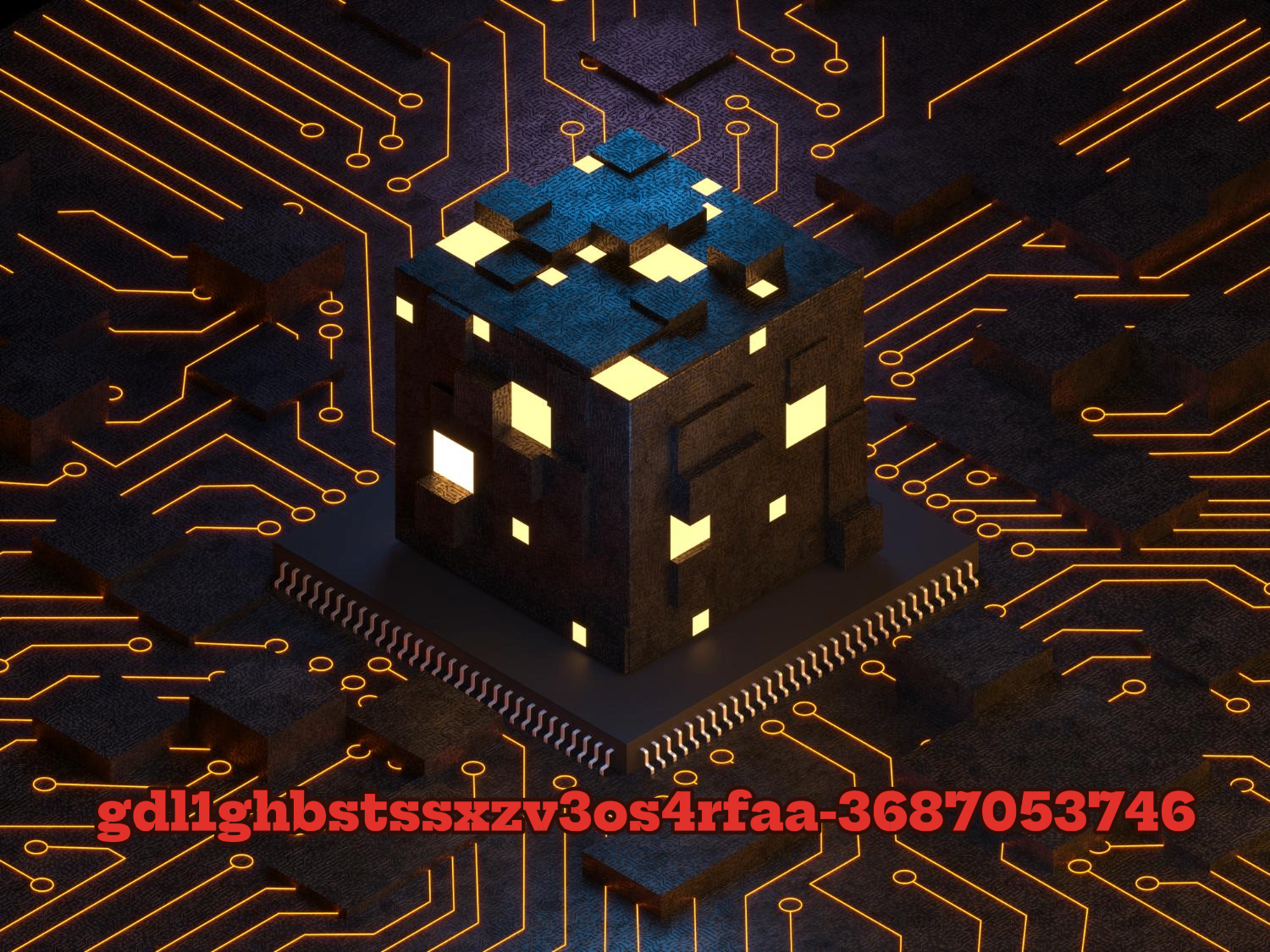gdl1ghbstssxzv3os4rfaa-3687053746: A Deep Dive Into Unique Identifiers, Structure, and Real-World Applications

Section 1: Understanding the Origin and Context of 001-gdl1ghbstssxzv3os4rfaa-3687053746
What Does 001-gdl1ghbstssxzv3os4rfaa-3687053746 Represent?
At first glance, the alphanumeric string “001-gdl1ghbstssxzv3os4rfaa-3687053746” appears to be a system-generated ID or an encrypted tag. It’s long, complex, and likely holds key metadata embedded in its structure. These kinds of tags often appear in backend systems, software databases, encrypted logs, or asset-tracking systems. The initial “001” could signify a version or batch number. The middle segment may carry randomized or hashed data, possibly unique to a user or device. The trailing numeric set might refer to a timestamp, ID, or internal tracking code.
Understanding its layout gives us hints about its function. In secure systems, these tags prioritize precise labelling and favour human-readable identifiers over human-readable labels. They are used in everything from cloud computing assets to encrypted API tokens.
Why Do Systems Use Such Complex Identifiers?
There’s one main reason: security and uniqueness. Systems can no longer rely on simple names like “user123” or “file1”. It’s not scalable, and it opens the door to conflicts and vulnerabilities. Instead, using a complex, structured ID like this ensures each object, session, or data log is one-of-a-kind. These identifiers often integrate hashed elements, time stamps, and user-specific encoding.
They serve multiple roles at once: they authenticate, index, and track data—all invisibly to end users. The randomness also serves as a mask, shielding sensitive information from exposure. Behind the curtain, they’re tied to detailed entries within a secure database. So when you see something like “001-gdl1ghbstssxzv3os4rfaa-3687053746,” you’re likely looking at a gatekeeper for layers of data tied to security, identity, and performance.
How Are These Identifiers Generated in the Real World?
Typically, these identifiers are not manually created. They’re auto-generated using algorithms within development frameworks, CMS platforms, or security protocols. Some use a mix of UUIDs (Universally Unique Identifiers), SHA-based hashes, and timestamp-based sequencing. Others embed user or system metadata, encrypted or obfuscated for added protection.
For example, a cloud provider might generate a unique key every time a new VM is spun up. The “001“ might reflect the deployment number. The “gdl1ghbstssxzv3os4rfaa“ could be a hashed token of environment variables. And the numeric tail—maybe a Unix timestamp—helps track its creation time. All of this is done in milliseconds behind the scenes.
These identifiers aren’t just about labelling; they influence security workflows, data auditing, and even billing systems. Some industries, such as finance or healthcare, rely on such system IDs for regulatory compliance.
Real-World Examples of Similar Identifiers
Look around any modern software stack, and you’ll find strings like this. Take AWS, for example. Instance IDs, such as “i-0abcd1234ef56789g”, are automatically generated to track and manage compute resources. In web development, content management systems like WordPress or Joomla may use similar hashes to tag custom uploads, user sessions, or database entries.
In secure messaging platforms, end-to-end encryption keys may also be represented in this manner—unique, unguessable, and logged under strict access control. Even digital receipts, blockchain hashes, or product licenses use these formats to create a digital fingerprint.
So, “001-gdl1ghbstssxzv3os4rfaa-3687053746“ fits right into this ecosystem. Whether it’s part of a dev stack, data pipeline, or encryption schema, its format tells us it belongs in a world that values security, automation, and traceability.
Section 2: Core Functionalities and Use Cases of the Identifier
Role in System Automation and Data Tracking
Identifiers like “001-gdl1ghbstssxzv3os4rfaa-3687053746“ play a vital role in automating tasks. In complex infrastructures, automated workflows depend on precise identifiers. These strings allow systems to locate resources, trigger actions, or execute jobs without manual input. Whether it’s a software update, log entry, or scheduled job, the ID is the glue that holds operations together. For instance, in CI/CD pipelines, each build or deployment is tagged with a unique code. This allows easy rollbacks, debugging, or auditing. The system utilizes these tags to maintain a structured and chronological order.
How It Enhances Security in Digital Environments
Security is a massive reason behind such cryptic IDs. Randomized or hashed identifiers reduce the risk of brute-force guessing or manipulation attempts. When objects are labelled with readable names, hackers can exploit patterns. But not with strings like these. They’re long, unpredictable, and machine-generated. Most of the time, they even change with every session, request, or login. That’s a layer of dynamic defence. In APIs, for example, these identifiers can be used to authenticate users or validate request sessions. This prevents unauthorized access and helps track suspicious behaviour across multiple systems.
Identification in Database and Backend Systems
Backend systems rely on consistency and speed. IDs like this act as unique keys in massive databases. When a user submits a form, uploads a file, or performs a transaction, the system creates a new row and tags it with a unique ID. This makes every record distinct, searchable, and traceable. Without it, database collisions or errors would be typical. Moreover, these identifiers allow for smooth data joins, quick lookups, and error tracing. Admins can track problems down to a specific record just by matching the ID. That’s how critical they are behind the scenes.
Integration Across Distributed Systems
In today’s tech world, systems don’t work in isolation. Cloud applications, microservices, and edge servers communicate with each other constantly. And when they do, they pass data along—often attached to a unique ID. This ID acts like a passport. It carries context. The receiving service knows how to treat the request, thanks to that identifier. So, even across regions, platforms, or devices, one string keeps the data recognizable and protected. This is what makes distributed systems reliable. They depend on identifiers to preserve meaning and prevent chaos in a high-speed, multi-node environment.
Monitoring, Logging, and Auditing Functions
Tracking performance or spotting issues? These IDs are a godsend. Every time an event occurs—such as a login, payment, or crash—it is logged with an ID. This builds a trail of activity. IT teams and analysts later use this data to monitor patterns, find bugs, or investigate breaches. With long-form, specific identifiers, it’s easy to connect related events or transactions. This leads to better accountability and faster diagnostics. Even in automated reports or compliance checks, these strings show up. They make sure each event is tied to a unique, traceable source.
Section 3: Technical Structure and Components Explained
Breaking Down the Identifier Segment by Segment
The identifier 001-gdl1ghbstssxzv3os4rfaa-3687053746 may appear as a random sequence of characters, but it likely follows a discernible pattern. Most structured identifiers are composed of distinct parts. Each part has a job. The prefix “001“ may represent a version or category. It might mark the first item in a sequence or a specific data type. The middle chunk “gdl1ghbstssxzv3os4rfaa“ is complex and random. It’s probably a hash or a session-specific token. The last part, “3687053746,“ appears to be a numeric sequence. It could be a timestamp, ID, or tracker. Together, they provide structure, identity, and uniqueness.
The Logic Behind Length and Complexity
Why do these identifiers look so long and random? It’s intentional. Length makes them secure. Complexity makes them unique. Short or predictable IDs are risky. Hackers can guess or replicate them. That’s why most systems use at least 32 or more characters. The combination of lowercase letters and numbers makes brute-force attacks more difficult. Systems also ensure these identifiers follow entropy rules. That means they carry enough randomness to avoid collisions. No two IDs should ever be the same, even if created just seconds apart. It’s math-based, not just random typing.
Hashing, UUIDs, and Tokenization Techniques
There are standard methods by which systems generate such IDs. One is hashing—turning input data into a fixed, scrambled output. For example, using SHA-256, even the same input gives a very different result if changed slightly. Another method is UUID (Universally Unique Identifier). This is often used in APIs, mobile apps, or cloud platforms. UUIDs combine time, device info, and randomness. A third method is tokenization—replacing absolute values with random placeholders. These methods produce strings that appear to be gibberish but serve a factual, technical purpose. Your ID likely uses one of these.
How Each Component Connects to Backend Operations
Each segment in the identifier plays a specific role in the backend. The prefix might determine routing. When a server reads “001,“ it might send the request to a particular handler. The middle part could link to a user, session, or action. If a bug arises, developers can use this segment to trace the exact event. The number at the end might be used for sorting, logging, or validating timestamp consistency. These aren’t just decorative pieces. They communicate with code, trigger processes, and ensure that everything in the system operates smoothly.
Section 4: Implementation Challenges and Practical Solutions
Common Issues Developers Face During Integration
Working with complex identifiers like 001-gdl1ghbstssxzv3os4rfaa-3687053746 can be challenging. Developers often face problems during integration. One of the biggest challenges is handling format mismatches. When one system expects a particular length or structure, and another sends something else, errors happen. There’s also the risk of corrupted or truncated IDs due to database constraints or code bugs. Some systems don’t support long strings natively. Others fail during data transfers. These issues can disrupt automation, result in lost data, or lead to duplicate records. Careful handling of formats, validations, and constraints is crucial.
Ensuring Identifier Security and Data Protection
Security is more than randomness. Developers must also protect how identifiers are stored and transmitted. If an ID represents user data or internal logic, exposing it can lead to breaches. Attackers may reverse-engineer patterns or track usage. That’s why encryption and access control are essential. Never store IDs in plain text if they connect to sensitive assets. Always use HTTPS during transmission. Use token lifetimes for expiration. In API systems, combine identifiers with authentication layers. These actions create multiple layers of protection, minimizing exposure and blocking misuse.
Managing Data Sync and Consistency Across Systems
One of the most challenging technical tasks is synchronizing identifiers across platforms. Let’s say System A generates the ID. System B stores it. And System C reads it. If one system is slightly out of sync, it causes broken links or missing data. This often occurs in microservices or with third-party APIs. To prevent this, developers use queuing systems, time-based conflict resolution, and ID validation on both sides. Systems should log every interaction and update records in real-time or batch sync intervals. Regular sync checks and error-handling routines help avoid long-term inconsistencies.
Avoiding Collisions and Duplicates in Large Systems
As systems scale, the chance of ID collisions increases. Especially if the generation process isn’t completely random, two users might get the same ID under certain conditions. That’s dangerous. It can overwrite records or mix data. Developers prevent this using hashing algorithms, UUIDs, and checks before saving any new ID. Some systems also use distributed ID generators, such as Snowflake (used by Twitter), which developers design to scale without overlap. This design ensures that even if the system creates thousands of IDs every second, each one stays unique and traceable without conflict.
Section 5: Future Trends and Real-World Applications
Evolving Use of Identifiers in Cloud and AI Systems
As cloud computing and AI systems evolve, so does the use of structured identifiers. These strings are no longer just labels—they’re vital components of logic, tracking, and automation. In cloud environments, identifiers like this help manage massive networks of virtual machines, containers, and APIs. In AI systems, every model version, dataset, or training session needs a unique ID to track accuracy and changes. These identifiers ensure workflows are traceable and replicable. In future AI infrastructure, these IDs may integrate with blockchain or real-time monitoring systems for even deeper control and security.
Mobile and IoT Integration with Unique Identifiers
The rise of mobile apps and IoT devices is increasing the demand for powerful, unique identifiers. Every mobile session, device, or API call may carry a string like 001-gdl1ghbstssxzv3os4rfaa-3687053746. IoT networks are even more demanding. Smart homes, connected vehicles, and wearable technology require lightweight yet secure identification systems. These identifiers help link devices to cloud dashboards, control hubs, and diagnostic systems. The future will likely need even more compact and encrypted formats optimized for limited-bandwidth environments. These IDs ensure smooth communication between edge devices and central systems.
Blockchain and Decentralized ID Innovations
Blockchain is revolutionizing the creation and verification of identifiers. In decentralized systems, unique strings are not only created—they’re verified by consensus. That makes them nearly impossible to fake or alter. Projects like DID (Decentralized Identifiers) are creating new formats for secure, user-owned identities. These IDs operate independently of central databases, granting users control over their data. In blockchain applications, every transaction or smart contract is tagged with a unique hash. It’s the backbone of traceability and transparency. Such a system could use the identifier in our title to represent assets, tokens, or interactions.
Practical Use in Business, Healthcare, and E-Commerce
Unique identifiers like this are already used in critical sectors. In business, they track invoices, customer journeys, and inventory systems. In healthcare, patient records, prescriptions, and lab results are tagged with complete anonymity. In e-commerce, they help manage product listings, shipping logs, and user actions. These IDs ensure that operations are accurate and compliant with regulations. Businesses are now combining these IDs with QR codes, NFC tags, and barcodes to bridge digital and physical systems. Their applications are expanding fast, solving problems across logistics, security, and automation.
Scalability and Future-Proofing Through Smart ID Systems
Scalability is everything in today’s systems. As user bases grow and data volumes explode, systems require ID structures that scale without breaking. The identifier “001-gdl1ghbstssxzv3os4rfaa-3687053746“ represents this next level. Innovative ID systems use AI to detect usage patterns, prevent duplication, and maintain consistency. Developers are building generators that automatically adjust for traffic, system load, and localization. Future systems might even embed metadata directly in the ID for real-time decision-making. The smarter the identifier, the more powerful and resilient the system becomes—ready for growth and innovation.
Conclusion
In a world driven by data, systems, and automation, identifiers like 001-gdl1ghbstssxzv3os4rfaa-3687053746 are more than just strings of characters. They’re digital anchors—uniquely tying resources, actions, and users across environments. Whether it’s for security, scalability, or interoperability, these identifiers carry significant technical and strategic value. Their structure is carefully crafted, and their role is foundational in modern architecture. As technology grows, so will the importance of these machine-readable fingerprints. Understanding their purpose today prepares us for how they’ll shape the platforms of tomorrow.
FAQs
1. Why are identifiers like this so long and complex?
They’re long to prevent guessing and to ensure uniqueness. Complexity helps maintain security and system integrity.
2. Can these identifiers be traced back to users?
Only if the system is designed that way are most data points anonymized or hashed to prevent direct traceability.
3. Are such identifiers used in blockchain?
Yes. Blockchain uses similar hash-based IDs to track transactions, assets, and smart contracts.
4. What happens if an identifier is duplicated?
It can cause system conflicts, data corruption, or overwrite issues. That’s why systems include collision-prevention mechanisms.
5. Can I generate such IDs manually?
Technically, yes, but it’s not recommended. Use system-based generators to ensure consistency, randomness, and security.
Read More: Camilla Araujo OnlyFans






